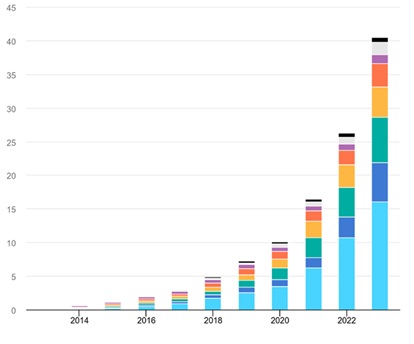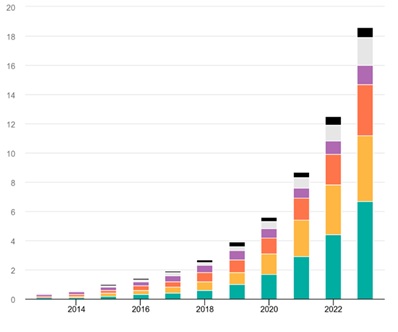As per the data from IEA
Out of which the major part of the market is driven by Chinese vehicles shown by blue part. If we remove their numbers graph becomes
It can be seen that in year 2023 out of 41 million vehicles major part i.e. more than 22 million vehicles are from Chinese origin. This itself shows dominance of China in this field, which is followed by European vehicles. This Chinese supremacy is originated from various factors viz. Government support: Invested heavily in heavy industry and battery technology, strong domestic market (large population drive strong domestic market), dominance in battery technology, competitive advantage (due to lower labour and established market), innovation and technology (driven by government investment towards heavy industry). All this has provided a competitive edge and has resulted in global presence.
At the same time, there are different concerns of profitability and worldwide scrutiny on quality and quality or applicability of Chinese vehicle. In addition to that there are numerous concerns of trade sanction and tariffs on Chinese material worldwide. E.g. US and Canada are imposing 100 % tariffs, EU’s tariffs vary by manufacturer, reaching up to 35.3%, While Saudi Arabia, UAE the sanctions are upto 10 %. Whereas India playing different game. India has implemented a conditional tariff reduction, lowering import duties on electric vehicles (EVs) to 15% for those priced above $35,000, but only for manufacturers investing at least $500 million in local manufacturing within three years. On the other hand, Australia, Africa, Japan, Singapore and many other countries has not implemented any tariffs.
Though some variation in market of local vehicles is observed in US and Europe, but it can always be defended with technological progress. Do you feel that such tariffs would affect further market of Chinese of EV or the technological progress would mask these factors?

